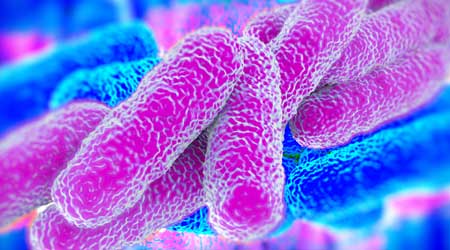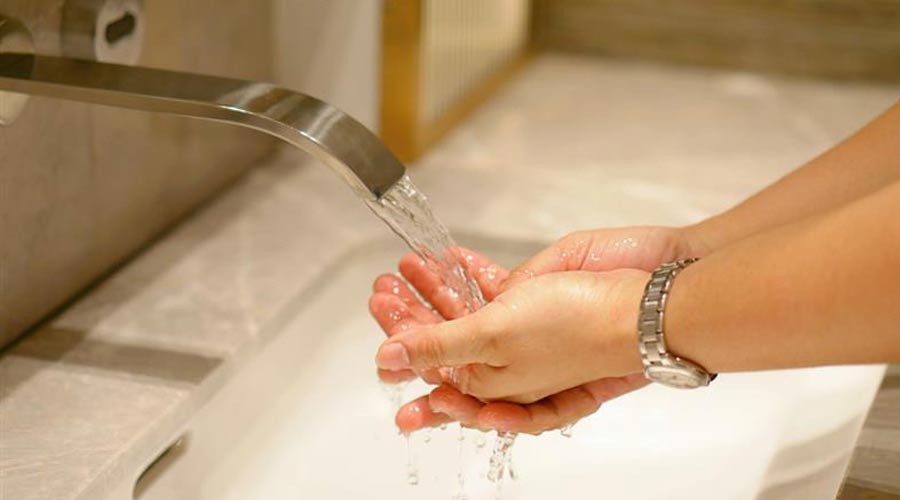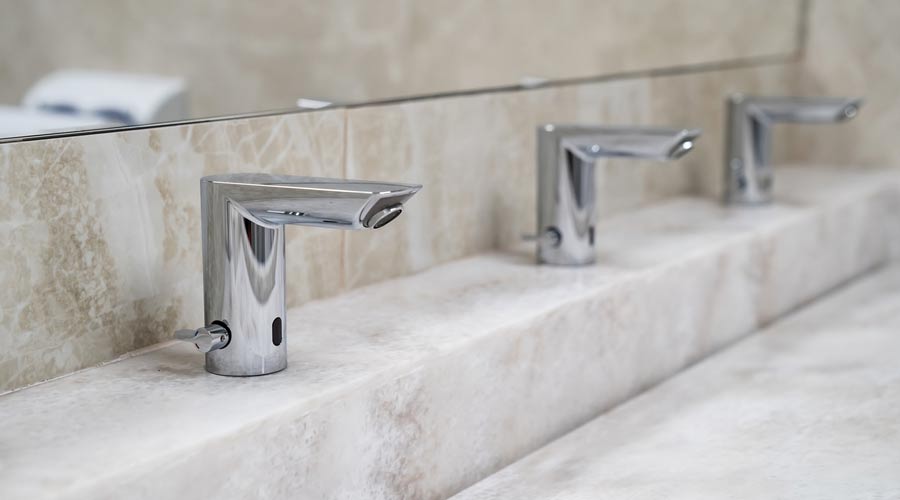 The coronavirus and COVID-19 pandemic has swept across the nation, but Legionnaires’ disease remains a difficult challenge for maintenance and engineering managers.
The coronavirus and COVID-19 pandemic has swept across the nation, but Legionnaires’ disease remains a difficult challenge for maintenance and engineering managers.3-Step Plan for Legionnaires' Disease: Prevent, Detect, Treat
Preventing Legionnaires’ disease remains a top priority in effective plumbing and restroom maintenance
The resurgence of Legionnaires’ disease has been overshadowed by the devastating impact of the coronavirus and COVID-19, but the disease remains a difficult challenge for maintenance and engineering managers. They must add the threat of Legionella bacterial contamination to their list of priorities related to effective plumbing and restroom maintenance.
To protect occupants and visitors, managers and technicians must take a series of actions related to plumbing and piping systems, water tanks, cooling towers, pumps and fountains. The actions represent best practices related to prevention, detection and treatment.
Preventing problems
It will be summer soon, and with summer comes warm, humid weather. By now, most managers have scheduled time for in-house staff and contractors to check cooling systems and perform scheduled and seasonal preventive maintenance. Smaller cooling systems are probably in operation, and the chilled-water systems, if not operating already, will be in operation by the scheduled availability start date.
Warmer weather also allows Legionella bacteria to find their way to environmentally friendly pools, pipes and all manner of plumbing and mechanical equipment – places where they can proliferate and contaminate potable and non-potable water or get picked up in a mist.
System start-up provides a good opportunity to develop or fine-tune a Legionella management program. If a facility already has a water-management program, the needed practices already should be documented and in place. Creating a program is simple enough.
Once in place, the program provides guidance for minimizing risks associated with Legionella and other waterborne pathogens. The toolkit from the Centers for Disease Control and Prevention (CDC), Developing a Water Management Program to Reduce Legionella Growth & Spread in Buildings – A Practical Guide to Implementing Industry Standards, includes special considerations for managers in healthcare facilities and hotels working with Legionella consultants. It also features a special section addressing considerations for facilities with public hot tubs.
A facility’s water management program also should reference the ANSI/ASHRAE Standard 188-2018, Risk Management of Building Water Systems. For regulatory requirements and other guidelines supporting a risk management program, managers can turn to the CDC at.
With a program in place, managers can turn their attention to prevention measures, which begin with an initial strategy to determine where and when the bacteria are most likely to be. Common locations include cooling towers, hot tubs, shower heads and drinking fountains.
Potential conditions typically consist of relatively stagnant warm water. Temperatures of 68-122 degrees enable the organism to multiply, and temperatures of 95-115 degrees are ideal for growth. Rust, scale and other microorganisms also can promote Legionella growth. It does not take long for a bacteria colony to develop, whether the situation is a long weekend or a prolonged or planned closure.
The risk-management program also must identify potential bacteria sources. The usual suspects include cooling towers and heated spas. While many sources operate outside the Legionella comfort zone and are unlikely to harbor bacteria, outside conditions or changes in operations can create circumstances that, while not ideal, enable bacteria to grow. Architectural fountains and waterfalls, evaporative coolers, misters, air washers, and humidifiers are just a few mechanical items using tempered water that fall into this category.
Having identified the potential sources, managers next need to be certain operational and maintenance practices are in place and being followed to minimize or mitigate bacterial presence.
Technicians can conduct a review of the equipment, equipment uses and distribution potentially associated with the Legionella bacteria, checking for temperatures, water circulation, water droplet size and nutrients. If they know of associated cases of Legionnaires’ disease, they can include that information.
They also should note the bacterial treatment and highlight tasks in the preventive maintenance plan that might affect the bacteria. Operationally, they should regularly monitor water-quality parameters, including temperature, disinfectant levels, and pH to determine disinfectant efficacy.
To minimize conditional opportunities for bacterial growth, managers should consider a review of water-system distribution. For example, in a hospital environment, hot-water distribution in patient areas should be recirculated.
Related Topics:














